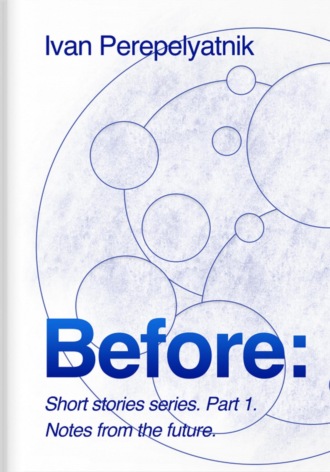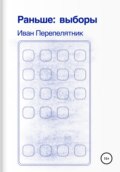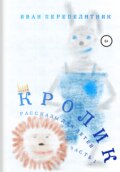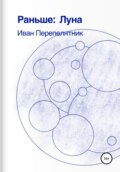
Иван Перепелятник
The Before Short Story Series. Part 1
Before: The Pill
Before, when someone was taken ill with anything more serious than a cold, the first effective recommendation that one might have heard was to see a doctor. Everything used to start with a GP and tests. It was necessary to take all kinds of tests and examinations, and to wait for the results. When everything was ready, following the established procedure, the puffy medical record made its way to the therapist, whose purpose was to interpret the data obtained, to come up with a diagnosis and to tailor a suitable treatment plan. Medication, physiotherapy, daily routine, physical activity and similar recommendations would make up the traditional and standard list for most non-critical physiological disorders for a common man. In some cases, it was much more complicated. One had to take examination on bulky and, as they proudly brand it at the time, high-tech medical devices. Incomprehensible abbreviations and words such as CT scan, MRI, ultrasound, … implied the need for experienced specialists understanding the subtleties and intricacies of examination methodology to work with such devices. Medical equipment was expensive and few hospitals could afford it. More than that, in some countries, such devices were available only in large state health centers, and those who needed additional research had to queue for up to several months. But even then technologies already allowed us to take a look inside ourselves – to see human organs in sufficient detail to understand their condition, to obtain digital data, to exchange information remotely with other specialists, for example, with more experienced doctors. Human blood and other various biomaterials tests became more and more accurate and detailed. It would seem that the results of the tests gave all the answers even without additional interpretations and study by doctors, including by those same therapists. If an indicator was still inside of the reference values, there you had the result – healthy and sound!
There were also those who thought they knew everything better on their own. They would diagnose themselves in line with the descriptions of a similar conditions on the Internet, would find a treatment program in the recommendations. It’s worth saying that such a system had a certain potential – self-healing really sometimes worked better by the will of circumstances. But unfortunately things did not always work out well. The Internet was, of course, a good and useful thing. But common knowledge had it that in that source of world wisdom there was plenty of garbage and pseudo-healers who would know everything for sure, there was more than enough of "techniques proven on thousands and thousands of patients around the world". Often self-medication, based on unverified and unprofessional recommendations would lead to sad, simply fatal results. When it became obvious that there was no way to do without specialists, the patient would turn to the doctor, but it was hardly possible if at all to help. The disease would happen to be neglected to such an extent that it was only possible to get rid of it by prayers and a miracle, and not without applying some practical scientific knowledge. Sometimes even in such situations of irresponsible neglect, it was still possible to save patients. But such cases were exceptional in a series of crippled and dead.
It was not, however, always the case that people would turn to the Internet for answers «to medical issues". At the same time, the price for professional doctors' services was not affordable to everyone. When the problem implied a long-term treatment program, such situations caused particular concern if insurance (in the early 2000s, financial coverage of certain situation risks, for example, illness, injury or death) did not cover the specific case of a patient.
A person and sometimes even a family could be completely ruined by endless bills for tests, patient care, the work of specialists and operations. Faced by such a dillemma, the choice was obvious – a patient not wealthy enough would have to borrow money, apply for a loan or hand over his fate to state-provided medical services, the practical professional level of which would often notably differ from the commercial one. Of course, there were exceptions to the rules. But unfortunately free medicine of that time would rarely align with the real needs of society.
Social inequality meant much greater opportunities for those who held the keys to all the doors. The wealthy (people who owned large assets: financial capital, real estate, such as houses, apartments, office centers, manufacturing companies, etc.) could afford to build their lives differently, providing their families with a different quality of living, and a different level of medical care. The key factor of a different way of life for well-off people, as they were still called at that time, was not so much the level of medical care. Their whole life was arranged in such a way that the very need to turn to medical services would occur much less often. Life in ecologically favourable areas of the world, better food, higher water quality standards, the opportunity to lead a healthy and rhythmic lifestyle, to travel and relax more often and more, … – all that of higher quality was available to them. The whole set of opportunities for such a small group of people in society provided a real advantage – they lived differently and at a different level.
Wealthy people would communicate with medical specialists not so much when there was an acute need for it. They would undergo regular and planned examinations. This practice corresponds to the key condition of a healthy life – timely diagnosis and prognosis of the patient's condition. The problem should be addressed even before it manifests itself – this rule No. 1 in modern medicine was available to a limited rich stratum of society and its political elite. Significantly less than 1% of people in the world could provide themselves and their loved ones with a healthy lifestyle that is accessible to everyone today.
When, nevertheless, the course of life required immediate communication with a doctor, there was no doubt who to contact how to do that. There was no reason to search for answers and recommendations on the Internet. A personal doctor was the first priority on the contact list.
Exceptional conditions of service for privileged patients was not a number one condition. The key to effective treatment was the experience of a specialist, an accurate diagnosis and the right program, high-quality medicines and that very high-tech equipment for a comprehensive examination of patients. Experience and competence were valued most of all. Precisely this was what everyone was willing to pay for. There were also private clinics unknown to general public. One would not be able to find contact details and location of such a medical institution anywhere. There was no data either in offline directories or on the Internet. Such clinics did not need advertising and a growing number of clients. The cost of their services was so high that the care for one patient would cover the budget for the construction of a small regional medical center and its operation for a year.
The location of such clinics was inaccessible to the common man. For example, one of those advanced centers was located in the Alps in Europe. One could only get to the clinic, located at an altitude of about 2000 meters, only by air by helicopter.
Such centers would employ specialists whose professional level of knowledge reached far beyond any standards. Getting getting the qualifications to work in such a clinic would take at least 20 years. Talented students would be taken notice of at the stage of application to educational institutions. Their academic success and social activity would be continuously monitored, as well as their approach to study, building relationships with fellow students and teachers. In a word, the employers would assess all the essential conditions for a possibility and expediency of making an offer to a promising student to enter a private club and gain access to a unique chance to work in a clinic that no one knew about and no one had ever heard of. If everything went well for a graduate student, he would be offered a fifteen-year internship in a number of specialized medical institutions located around the world – from South Africa to Japan. Such a unique and holistic experience provided the practical knowledge base required for a distinctive job when a doctor reached a plateau – the phase in a medical career when a person was ready to work with special patients.
A proud and peaceful view of majestic mountain peaks, veiled with sparkling snow, a little prickly sun, piercingly deaf silence and the air that is not to be confused with any other, clean and without a pronounced smell. Such remote places were chosen for the construction of specialized clinics. Nothing should disturb the peace and privacy of patients. No casual tourists would suddenly happen to wander into the protected area, constantly patrolled by private security detachments to guarantee the safety of guests. Not to mention journalists and those looking for fresh tabloids news. Everything ensured complete confidentiality and maximum inaccessibility to make such sites out of reach. The appropriate level of comfort for patients was provided by several dozens of highly qualified employees. Service staff, administration, cooks and, of course, doctors. Among patients in such clinics, one could see people whose faces were known all over the world. But even with all their power and infinite wealth, these celestials could not provide themselves with what is available to everyone today – confidence in the future.
Reed, a little tired of reading the section on the clinic's information portal – "Stories: how it all started" – put the tablet aside on the seat next to him and leaned back in the chair, relaxing in its cozy embrace. The capsule rustled soundlessly along the highway, cutting through the damp air flowing in the warm rays of the early sun.
"How much has changed since then", Reed remarked into the void, addressing an invisible counterpart. – Today, life expectancy is almost twice that of a limited circle of people who had access to the latest scientific medical developments of the time. But all this, unfortunately, has not yet allowed us to completely eliminate the possibility of errors, inaccuracies in our health programs. Neither, ultimately, of diseases. And for now we're still mortal," Reed looked out of the window and smiled slightly.
"Yes, Reed, you're absolutely right", Al replied with a slightly noticeable soothing note, "but let me remind you of all the big, drastic changes that we have been recording over the past 150 years. Today, humanity has already gone far ahead. As you noted, the key indicator is an unprecedented achievement – the average life expectancy is twice higher than in the beginning of the 21st century. The modern scientific community provides almost a 100% guarantee of a healthy, long and happy life for every person. What the rich you read about could not have imagined, today determines the future even before conception takes place. A thorough examination of the parents’ DNA, the required genome corrections constitute the first and defining stage of the formation of a health program. The analysis of the infinitely complex program of a human life – the genome – is based on fundamentally new computing capabilities, the foundation of which was laid in the middle of the 21st century.
Developers and scientists have achieved almost unlimited scaling of capacity of quantum computing machines, which very quickly led to the absolutely obvious superiority of artificial intelligence over humans on a wide list of activities. The scientific field of research and development of new technologies is a key layer of life activity, and the mental potential of a human being was a defining factor before. But everything changed surprisingly quickly since the middle of the last century. Task assignment and control constitute the main role of a biological individual today.
– Of course, the individual has continued playing and, of course, still plays the main role in creative work and scientific research," Al emphasized politely. "At the same time, people were able to shift most of the functions, some routine and repetitive tasks to machines, which provided a fundamental acceleration in a lot of research allowing us to reach powerful and efficient levels of results for a number of them. Medicine is the field of research in which the efforts of the PAX have been focused in the first place. The PAX is the name that public choice assigned to a cluster of computing power of quantum computers distributed around the world.
– Yes, but genome corrections ultimately did not rule out errors in the program of life, as you well know, Al.
– You’re right, Reed. With all these issues, program errors, work is already underway at the next stage. Working out and developing an individual compensation course is the second key element designed to correct deviations from the system that the program identified throughout an individual's life activity. These deviations cannot be figured out at the initial, starting position, when analyzing the genome. A person's life presents endless changes, variations and choices first made by an individual’s parents and surroundings, then personally by the individual. The environment is changing, society is changing, there are global shifts on the planet, in the star system, profound changes are taking place, and so on. All these components have a direct impact on each and everyone. The system is infinitely complex, the number of interconnections is practically infinite, trillions of trillions.
No one, not even the PAX, can take everything into account in the predictive programs of life. Even a 0.01% deviation in the accuracy of the forecast leads to irreversible consequences over a period of 10 years. Regarding health indicators, regular comprehensive examinations are carried out every 2 years. Resulting from such tests and monitoring is an individually developed unique pharmacological substance designed to make timely corrections to the program of life and health. The PAX calculates all relevant components and conditions related to each patient, comparing primary forecasts with up-to-date data obtained on the basis of a comprehensive examination and analysis. Resulting from the survey is the production of a unique drug, a pill, taking which once a month provides corrections of micro software errors.
– But there are also those who refuse to participate in such a practice. Those who do not want and are not ready to be part of some plan, even though it has been developed in good faith as stated, Reed objected.
«Exactly, Reed. You're right again," Al replied. Such citizens do not want to be part of the Republic either, they often become hermits and freaks. And sometimes they actively oppose society. In their opinion, people give up their freedom and life as payment for the imaginary opportunities provided by modern civilization. They go outside the limits of a modern society. Such divergents claim that their personal freedom, freedom of choice, is worth more than the possibilities of living in an artificially created, computer-programmed reality. These are their fundamental and basic reasons, Reed.
– I don't even know. As for me, these reasons are completely controversial. No one restricts us in our thoughts, freedoms and actions. By and large, we act as we believe we have to. We say what we think is right. To reject the achievements of science, not to participate in public institutions, to stay away from the latest technological discoveries, not to use what medicine offers for your well-being seems to me simply unreasonable. It's kind of being stupid. Nonsense.
– Reed, 99.99% of the Republic agree with you, – said Al enthusiastically. – We are already approaching our destination. We'll be downtown in less than 2 minutes, Reed.
Al's hologram gradually faded away. Filling the silence, the computer turned on the sound transparency mode, letting the muffled noise of the forest rushing past the capsule window into the cabin. A quiet wind, gently touching treetops, occasional overflowing voices of their permanent residents trilling their claims to the territory, rays of light breaking through the dense green curtain of trees. —Everything here is peaceful,– Reed thought.
The capsule slowed down a little before the next U-turn of the winding mountain serpentine. 1950 meters above the sea level – read the marking on the next road sign.







